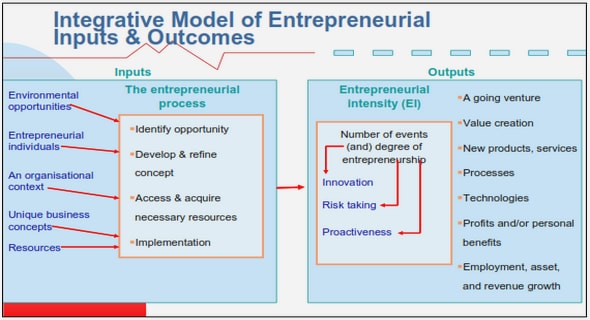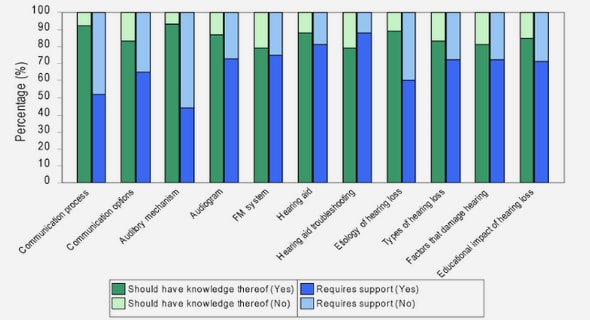Get Complete Project Material File(s) Now! »
The current properties in biased graphene
In the last decade, electronic transport in graphene has attracted much attention[118]. As an example, many studies have been devoted to the investigation of the unconventional behavior of carriers tunneling through an electrostatically-induced potential barrier in graphene. This behavior, which is called Klein tunneling [119], is due to the dispersion’s conic shape. Further, theoretical and experimental studies on transport properties in graphene-based devices have shown that the current in biased graphene devices results from the interplay between Zener-Klein transport and nontunneling current. The Zener Klein transport is the tunneling between different energy bands whereas the nontunneling current via defect scattering is associated with carriers that always remain in the same band.
Zener-Klein tunneling in graphene In graphene, due to its gapless band, an arbitrary small electric field is able to make electron carrier jumping from the valence band to the conductance band due to Zener tunneling. Moreover, due to the chiral nature of electron in graphene, there is a conservation of pseudo-spin in graphene. The importance
of pseudo-spin is that it implies the absence of backscattering if an electron tries to backscatter in order to keep the pseudo-spin conservation as both k and σ needed to be reversed at the same time. The potential induced by impurity in graphene does not act in sub-lattice space and thus the pseudo-spin can not be reversed; this results in the backscattering to be impossible. The absence of backscatter makes it possible that the electron is transmitted and keeps the same direction while the momentum is reversed when it goes from a conductance band to a valence band. In other words, the carriers with the velocity parallel to the electric field experience Zener tunneling without being backscattered, a behavior that is markedly different from the one in conventional semiconductors [120, 121, 122]. The physics is the same as for relativistic electrons tunneling through a barrier, a phenomenon called Klein tunneling. The Zener-Klein tunneling (ZKT) is illustrated in Figure 2.6 and describes the coexistence of a Zener tunneling and the Klein tunneling when an electric field is applied to the graphene.
Dark current-bias characteristics of the graphene/hBN pho- totransistors
We start the investigation by measuring the transport properties of the graphene/hBN phototransistors with the aim to determine the mechanisms responsible for the dark current in these devices.
Low-bias resistance The resistance of the graphene/hBN phototransistors as a function of VGATE at low bias (VDS = 10 mV) and at low temperature (T = 4 K) is reported Figure 2.7. We observe that at large VGATE, the resistance is low as the graphene layer is highly doped. It tends to the contact resistances that dominate over the resitance of the graphene channel. The contact resistance, observed at high positive VGATE, is lower than the contact resistance observed at high negative VGATE. Since it is known that 1D contact technique provides n-doped contacts, we deduce that positive VGATE corresponds to the electron doping side and the negative VGATE corresponds to the hole doping as indicated in Figure 2.7. As expected, close to zero, the resistance is maximum and this main peak corresponds to the charge neutrality point (CNP) of the graphene channel. The resistance at CNP is limited to charge puddles as discussed previously. Considering the contribution of both electrons and holes to the conductance of the graphene sheet, the total resistance of a device is expressed as: R = L W 1 σ + 2Rc.
Photo-transport in biased graphene/hBN phototransistor
To investigate the recombination for carriers at low photon energy and low fluence, we use a quasi-continuous mid-infrared laser excitation of wavelength λ = 10.6 μm (i.e. photon energy of 117 meV) and set graphene at charge neutrality point (CNP). This provides weak incident photon density and corresponds to photon energy between the Fermi-level fluctuations (∼ 20 meV) and the optical phonons of graphene and hBN ~ = 170 – 200 meV. Thus, the absorption of the incident photons relies on interband process in the graphene layer. The optical setup is reported in Figure 3.1. It is made of three parts as below:
• Power and polarization control of the incident light: The quasi-continuous CO2 laser delivers 10.6 μm wavelength light modulated at 5 kHz. The laser light firstly passes through a linear polarizer, this linear polarizer is able to knob the maximum power of incidence light, the second optical element is either a linear polarizer or a wave plate, it can rectify the polarization orientation to meet needs of the experiment. After that, the beam is split by a wedged ZnSe window into two arms. All the ZnSe windows in the optical setup except the cryostat are wedged to avoid the specular reflection back into the laser cavity, which can lead to instability.
• Beam collimation and expansion: Then, one arm is expanded to a diameter of 22mm for further focusing at the diffraction limit, the other arm is used to record the fluctuation of laser power in real-time.
• Focus and collection: In the transmission arm, a set of aspheric Germanium lenses are used to focus the beam onto the phototransistor-based device. The optical beam transmitted through the phototransistor device is collected by a mid-infrared photovoltaic multiple junction detector.
Spatial profile of the photocurrent
Using this experimental set-up, we investigate the photoresponse of the graphene/hBN transistors at low temperature T = 4 K. We start by probing the spatial profile of the photocurrent to get insight on the physical mechanisms involved in the photoresponse.
The laser spot is focused on the device with a waist, w0 = 10.6 μm, determined using usual knife-edge techniques. The sample of dimensions 10.4×20μm2 is moved using a motorized translation stage along the direction of the graphene channel and the photocurrent is measured for each sample position. For this experiment, we keep the chemical potential of the graphene at the CNP.
Table of contents :
1 Introduction
1.1 General context
1.2 State-of-the-art
1.2.1 THz sources
1.2.2 THz amplifiers
1.2.3 THz amplitude modulators
1.2.4 THz waveguides
1.3 Graphene for THz technology
1.3.1 Electronic band structure of graphene
1.4 Thesis outline
2 Graphene/hBN phototransistors: transport properties
2.1 Introduction
2.2 Fabrication of the graphene/hBN phototransistors
2.3 Experimental set-up for transport measurements
2.4 The current properties in biased graphene
2.5 Dark current-bias characteristics of the graphene/hBN phototransistors .
2.6 Conclusion
3 Photoresponse of graphene-hBN photo-transistors under mid-infrared illumination
3.1 Photo-transport in biased graphene/hBN phototransistor
3.1.1 Experimental set-up
3.1.2 Spatial profile of the photocurrent
3.1.3 Competing mechanisms for photocurrent
3.2 Linear photoresponse in biased graphene/hBN phototransistor
3.2.1 Photocurrent–bias characteristics
3.2.2 Photoexcited carrier density
3.2.3 Carrier lifetime
3.2.4 Responsivity
3.2.5 Influence of light polarization
3.3 Nonlinear photoresponses in biased graphene/hBN phototransistor
3.3.1 Non-linear regime in V ∗ DS
3.3.2 Emission of Hyperbolic Phonon Polaritons
3.3.3 Non-linear regime in Pinc
3.3.4 Photoexcited carrier density
3.3.5 Full photoconductive response including all regimes
3.4 Conclusion and Perspectives
4 Graphene based metal-dielectric waveguide
4.1 Introduction
4.2 Description of the graphene-coupled dielectric-metal waveguides
4.3 Mode analysis of waveguides based on FEM method
4.3.1 Full vector mode analysis in 2D
4.3.2 Boundary conditions
4.3.3 Dispersion relation of the fundamental modes
4.3.4 Graphene coupled to the hybrid dielectric-metal waveguide
4.4 Conclusion
5 THz characterization of the graphene coupled hybrid waveguides
5.1 Fabrication and process characterization
5.1.1 Characterization of the graphene coverage
5.1.2 Electrical characterization
5.2 THz characterization of the devices
5.2.1 THz time-domain spectroscopy system
5.2.2 THz characterization of the hybrid waveguides
5.2.3 Interpretation based on interference effect
5.3 Conclusion and perspectives
6 General conclusion and perspectives
A Appendix
B Fabrication of waveguide samples
B.1 The strategy uesd in mapping Raman spectroscopy
Bibliography


